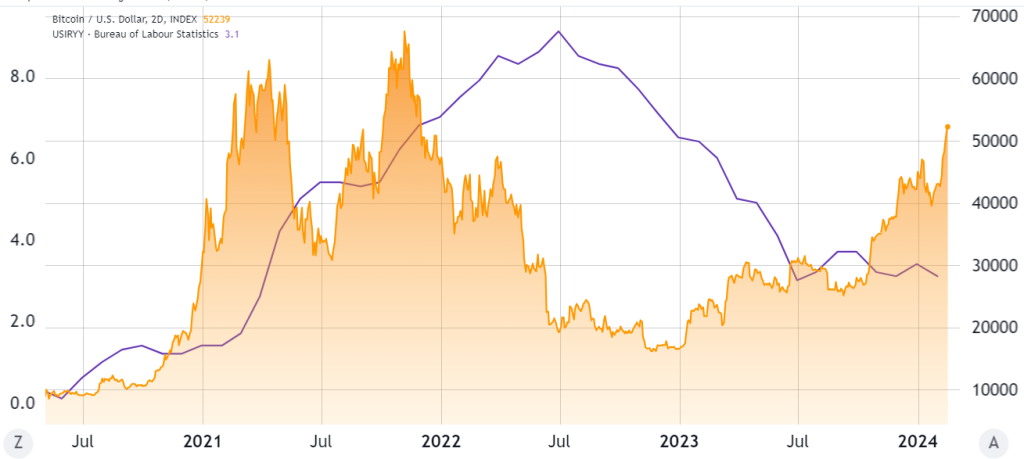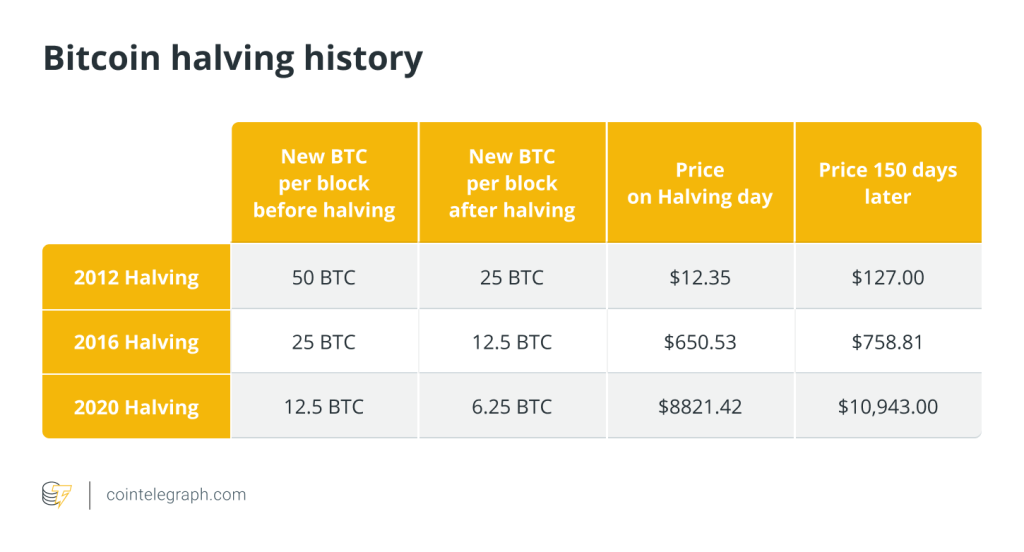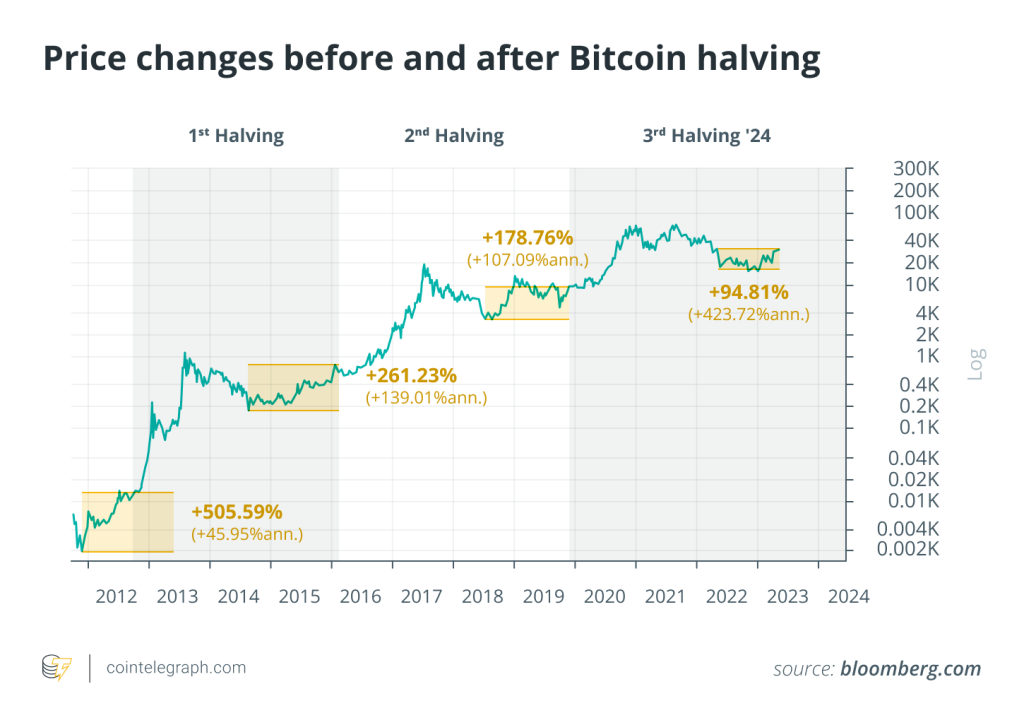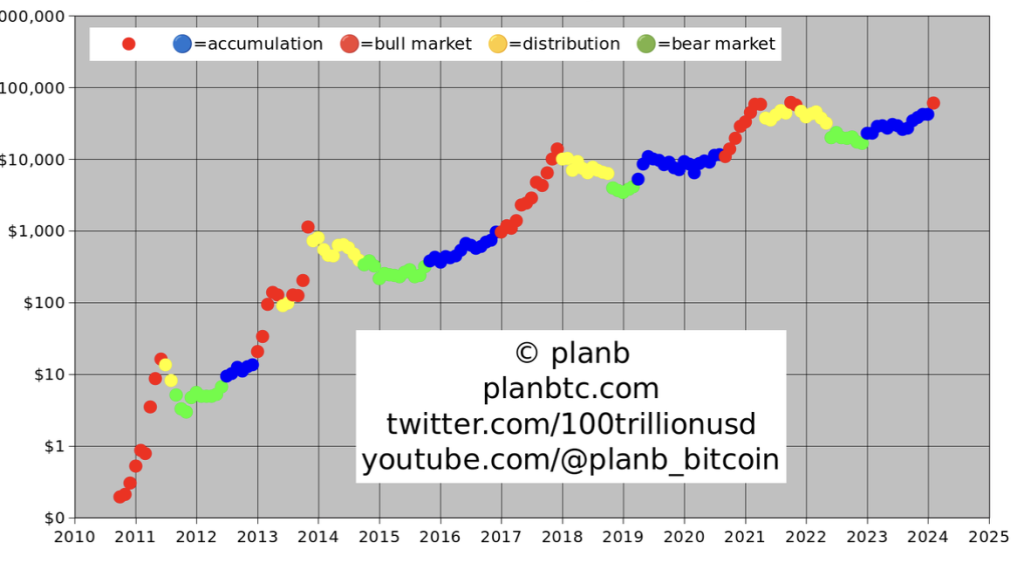Bitcoin price unlikely to hit all-time high before the halving — Here’s why

Bitcoin price might fail to top $70,000 before the April 2024 supply halving, but the longer-term projection looks positive.

For investors, turning bullish on Bitcoin is tempting, especially after a 91% rally to $52,000 in just four months ending on Feb. 15. Bitcoin’s current $1 trillion valuation places it among the world’s top 10 tradable assets and even ahead of the Warren Buffet’s world-famous Berkshire Hathaway, which has an $875 billion market capitalization.

The additional 34.5% gains needed for Bitcoin to reach $70,000 from the current $52,000 level represent a $350 billion increase in BTC’s capitalization. This move would rank the cryptocurrency ahead of silver and the United Kingdom’s pound, including bank deposits and currency bills. The key question is whether the current conditions support Bitcoin’s $1.35 trillion valuation.
One could argue that Bitcoin already cleared those hurdles in November 2021 when it hit its $69,000 all-time high. Repeating that feat seems more likely now, given the approval of spot Bitcoin ETFs in the United States and the resolution of some risks, such as Binance’s court battle with regulators and FTX exchange bankruptcy procedures.
Bitcoin’s all-time high was fueled by low interest rates and skyrocketing inflation
Traditional finance fixed-income yields were below 0.50% in November 2021, which caused investors to seek risk-on assets for higher yields. U.S. inflation, measured by the Consumer Price Index (CPI), also spiked to 6.8% year-over-year in November 2021, the highest since June 1982. Conditions then strongly favored scarce assets while stock market investors feared global supply chain disruptions and COVID-19 impacted economic activity.

The latest CPI inflation data for January 2024 shows a 3.1% increase year-over-year, which remains above the U.S. Federal Reserve guidance but is moderately contained. It may be naive to assume current inflation presents a risk comparable to when Bitcoin reached its all-time high. Data shows investors expect a 10.9% earnings growth for S&P 500 companies, up from 3.8% in 2023. Hence, investors have little incentive to seek alternative assets compared to late 2021.
Related: MicroStrategy listing in the S&P 500 index could expose millions to Bitcoin
Spot ETFs will transform Bitcoin into a mature asset class
Since launching on Jan. 11, the spot Bitcoin ETF industry gathered an impressive $4 billion net inflows in the U.S., surpassing $35 billion in assets, or 3.5% of Bitcoin’s market capitalization. In comparison, the collective holding of gold ETFs amounts to $210 billion, equivalent to 3% of its market capitalization if excluding the ~50% used in jewelry and medals. This doesn’t imply Bitcoin’s ETF is nearing a limit but provides a rough indication that the asset class is more mature than in November 2021.
A significant selling point for Bitcoin is the institutional inflow that occurred. Yet, its price remains 25% below the $69,000 all-time high, or even lower when adjusted for inflation or the aggregate fiat money supply.
Bitcoin’s adoption has increased, but the bullish estimates of a $100,000 or higher price haven’t materialized. On the bright side, a $3 trillion market capitalization company was a distant dream in November 2021, but it became a reality for Microsoft and Apple. So, as long as the dollar continues to deteriorate, there’s hope for Bitcoin to surge above $70,000, but it’s unlikely to happen ahead of the halving in April.






Responses